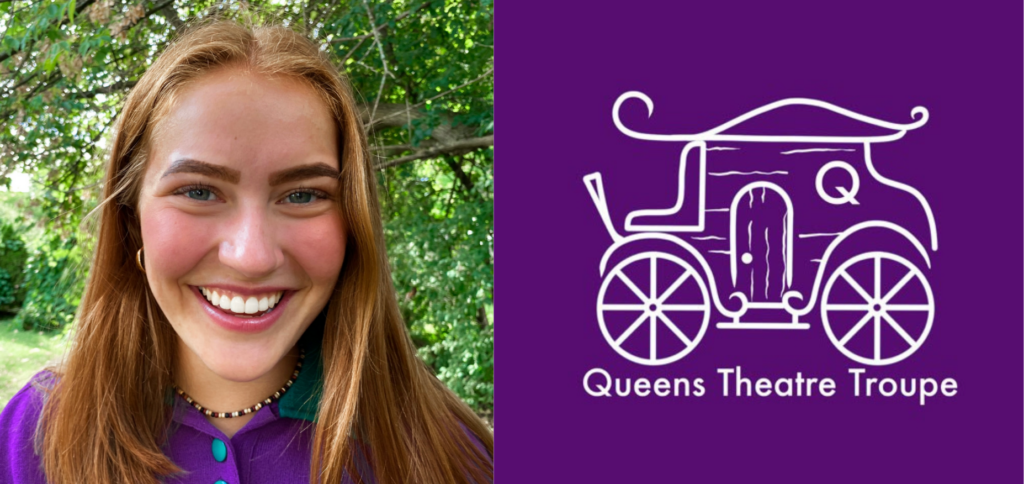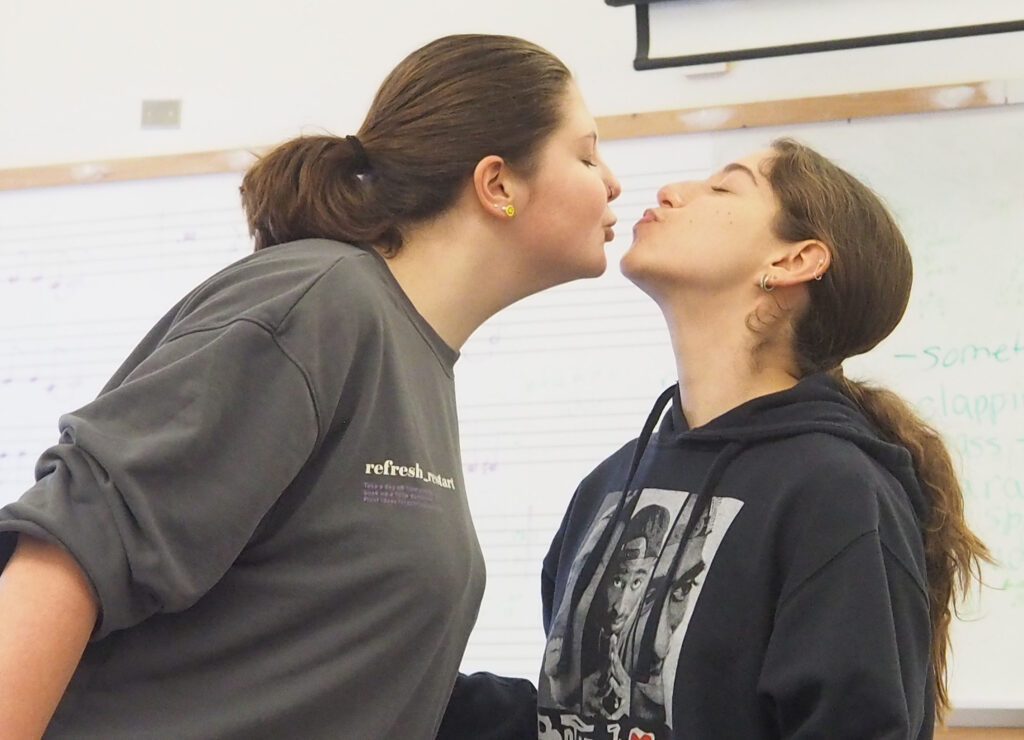“I’m Finally Doing What I’ve Always Wanted to Do”: an ‘Ernest’ Conversation with Victoria J Marmulak

After a dreamy debut last fall, Queens Theatre Troupe (QTT) has announced their sophomore play: The Anger in Ernest and Ernestine.
Founded in spring 2023 by a group of five Queen’s students, the education-focused club is dedicated to creating space for exploration through ambitious productions of published plays. Amidst a busy rehearsal schedule, Ernest director and QTT board member Victoria J Marmulak was gracious enough to make time for a conversation about the show, the troupe, and their process as a theatre-maker.
This conversation has been edited for length and clarity.
I have to admit, my knowledge of Ernest-related plays ends around the 1890s with Oscar Wilde. What’s The Anger in Ernest and Ernestine about?
It’s a show about a couple of newlyweds, and they are very in love, and they are moving in together for the first time. The title presents some suspense, some anticipation. But basically, Ernest and Ernestine are clowns, and they are very innocently in love. And they have discoveries that pop up around every corner of their basement home that they so crampedly live in.
That seems very real to the Gen Z/Millennial experience. We’re all living crampedly these days!
It’s so real. I have five housemates!
So, Queens Theatre Troupe is dedicated to reimagining and adapting plays that students are passionate about. You did some wild things with Life Is A Dream in the fall. What’s been exciting about creating this adaptation of The Anger in Ernest and Ernestine?
I’m interested in exploring theatricality and stylization in different ways. In the drama program at Queen’s, we quickly learn that realism is a style that is very new… Most things were not realism until the 1850s. So I’ve been taking that and running since the second week of first year.
What matters to me is that, if anything feels real in this show, it’s the people. This could be any couple. I’m interested in them as representing romantic relationships in general. And just trying to stylize the play as a whole to kind of distance the audience from any semblance of, ‘What is their world? What do we think their world could be?’ in terms of design—without being too vague. You’ll have to come see it.
Have you directed a show before? Besides your solo show in TK Theo Fringe.
I directed a 40-minute music piece in the DAN Exposition series two years ago, written by Lily Lachapelle. I loved that a lot. I did some directing before university, but really just classwork and stuff like that. So having something that was seen by the public, and not only my classmates’ parents, was really special.
I always knew I wanted to direct theatre. I’ve done a lot of dramaturgy and producing over the last couple of years. Taking on this project, I’m finally doing what I’ve always wanted to do, which is to do a big, full-length show and direct it by myself. I was assistant director for The Lancashire Lass last spring, and I learned so much from Tim Fort. So now I’m applying that to my own practice.
Every show is different. Every production has its own needs. It’s always about who are the people that you’re working with right now? And what do they need? And what will work best? So it’s been incredible to figure out, how are we telling the story all together? What does everybody in this room and on this team need? And what do they want?
And who are the people you’re working with now?
The actors are Dani Braun and Jaeli Schnoor. The show has roots in its creators’ work in the clown tradition. I’ve been really interested in clown over the past couple years, but I don’t know that much… So we’ve been doing a lot of exploring together. Our dramaturge, Sara Starling, has been helping us out with that.
So that’s been really interesting to talk about—why is this acting style the way it is? What is its significance to the story we’re telling? How do we embody that? And also, how do we rehearse it? Because clown is so dependent on the audience—the feedback, the energy that the audience gives the performers. So it’s been interesting to plan… You can’t know exactly how people are going to respond. You just have to be open and ready to receive.

You’re one of the founding members of Queens Theatre Troupe and a member of the current board of directors. After the company’s inaugural season, where do you hope to see QTT go?
I hope that Queens Theatre Troupe lasts as a core club that can be at Queen’s for students to be very explorative with what they’re doing. We’ve been trying to set the precedent with these two first shows. And I just hope that people take risks. If it’s full-length plays, people can be really bold. University is the time for that, to try things and see what happens—all of life is the time for that, really. But I hope that people recognize that QTT is a space specifically for that. And I hope that people lean into it.
In terms of growth, after this year, we’ve been able to have a little bit of community outreach and attention… We’re trying to attract people from all departments and faculties to be a part of the productions. So just hoping that it continues to grow, and that the production value and budgets can be bigger and better.
A really big Medieval Times cardboard crown instead of just a regular one?
Exactly!
Thank you so much for taking the time to speak with me—I’m looking forward to seeing this show. Before we go, is there anything else you’d like to add?
I’m so interested in how humour works in an audience and how that energy occurs. Why people choose to laugh, and why people choose to not laugh, and what that laughter means socially. People don’t always laugh because they find something funny. People also laugh because they are uncomfortable, or because they are scared. If someone around them is laughing, then they feel inclined to also laugh, because it’s fun to join in on something together. I’m really interested in when people break the inertia and laugh in the quiet, when maybe the people around them aren’t. To direct this show that specifically depends on the connection with the audience is really exciting to me.
Originally from Cape Breton, Nova Scotia, and raised mostly in the prairies, Victoria J Marmulak is a fourth-year Drama student at Queen’s with a fascination for humour and its operations in audience settings.
Queens Theatre Troupe presents ‘The Anger in Ernest and Ernestine’ in Theological Hall from February 4th to 11th. Tickets and more information can be found here.